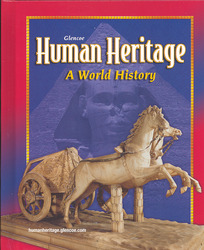Human Heritage: A World HistoryChapter 34:
The AmericasWeb Activity Lesson Plans“Frederick Douglass”Introduction
Students have read about the Civil War in America and the issue of slavery. In this exercise, students will examine the life of Frederick Douglass, an abolitionist who fought for the civil rights of all people during the 1800s. Lesson Description
Students will use information from the American Visionaries: Frederick Douglass Web site to learn about Frederick Douglass. Students will read about his early life, his role as an orator against slavery, his many public offices, and his work for women's rights. Students will then answer four questions and apply this information by writing an imagined conversation that they would have with Frederick Douglass if they could travel back to 1889. Instruction Objectives
- Students will be able to describe the works of Frederick Douglass, a civil rights leader of the 1800s.
- Students will be able to use this knowledge to write an imagined conversation between themselves and Frederick Douglass.
Student Web Activity Answers
- Frederick Douglass was U.S. Marshal of the District of Columbia, the District of Columbia Recorder of Deeds, the U.S. minister to Haiti, and the secretary of the commission of Santo Domingo. Additionally, he served as an advisor to several presidents and also served as a speaker for the Massachusetts Anti-Slavery Society.
- At an early age, Douglass realized that his key to freedom was education, and he worked diligently to refine his reading, writing, and speaking skills.
- After his escape from slavery, Frederick Douglass worked in the North with abolitionists to secure freedom for all Americans. He was a charismatic public speaker at abolitionist meetings, and he also wrote pamphlets against slavery and lobbied officials in Washington. His newspaper, the North Star, and his later periodical, the Douglass Monthly, were platforms for African American thought. Frederick Douglass fought unfailingly for the abolishment of slavery, and after emancipation was achieved, he worked to improve the lives of former slaves.
- Douglass actively supported the women's rights movement, as he believed that "Right is of no Sex—Truth is of no Color."
- Students' conversations will vary.
 | 




